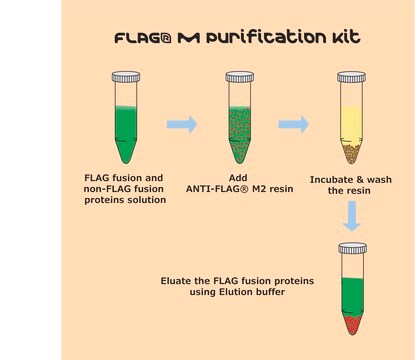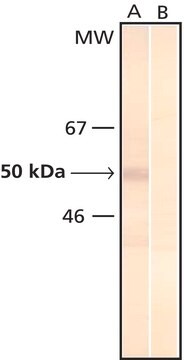05-1000
Anti-Phosphoserine Antibody, clone 4A4 (mouse IgG1)
clone 4A4, Upstate®, from mouse
Synonym(s):
Clone 4A4 Anti-Phosphoserine, Phosphoserine Detection Antibody
About This Item
Recommended Products
biological source
mouse
Quality Level
antibody form
purified antibody
antibody product type
primary antibodies
clone
4A4, monoclonal
species reactivity
vertebrates
manufacturer/tradename
Upstate®
technique(s)
ELISA: suitable
flow cytometry: suitable
immunofluorescence: suitable
immunohistochemistry: suitable (paraffin)
western blot: suitable
isotype
IgG1
shipped in
dry ice
Related Categories
General description
Specificity
Immunogen
Application
Flow Cytometry
Immunohistochemistry (Paraffin)
ELISA
Signaling
General Post-translation Modification
Quality
Western Blot Analysis:
0.5–2 μg/mL of this lot detected serinephosphorylated proteins in a lysate from either insulin or Calyculin A/Okadaic-treated human A431 carcinoma cells.
Target description
Physical form
Storage and Stability
For maximum recovery, centrifuge the original vial prior to cap removal. If the product has accidentally been frozen and thawed, spin it at 13,000 x g for 10 minutes at 2-8°C.
Other Notes
Legal Information
Disclaimer
Not finding the right product?
Try our Product Selector Tool.
Storage Class
12 - Non Combustible Liquids
wgk_germany
WGK 2
flash_point_f
Not applicable
flash_point_c
Not applicable
Certificates of Analysis (COA)
Search for Certificates of Analysis (COA) by entering the products Lot/Batch Number. Lot and Batch Numbers can be found on a product’s label following the words ‘Lot’ or ‘Batch’.
Already Own This Product?
Find documentation for the products that you have recently purchased in the Document Library.
Customers Also Viewed
Our team of scientists has experience in all areas of research including Life Science, Material Science, Chemical Synthesis, Chromatography, Analytical and many others.
Contact Technical Service









